Jaisalmer fort got the name “Sonar (Golden) killa” thanks to a great Indian film maker – Satyajit Ray. A beautiful award winning film which popularised the fort especially amongst the Bengalis. One could spot a lot of visitors from West Bengal.
This fort was built to live-in. The citadel or the main fort center has palaces for the king and the queen, one side was assigned for the brahmins, and the other side of the fort was assigned for the worker category so that they could be available for services even in the middle of the night. These areas all are under ownership of their successors and selling of the fort land is not permissible. A few owners have now leased their land inside the fort to shops and restaurants and a huge population still lives within the fort. the structure seems like a fort only from outside. Once we cross the 3 main gates, it is more like an old township with beautifully carved structures.
The palace of the kings and queens are beautiful from the outside. There is a little museum in the palace, which we skip and chose to visit the Baa-ri-haveli, which is a home of a minister, which is also avoidable if you are are not fond of artefacts and history and museums.
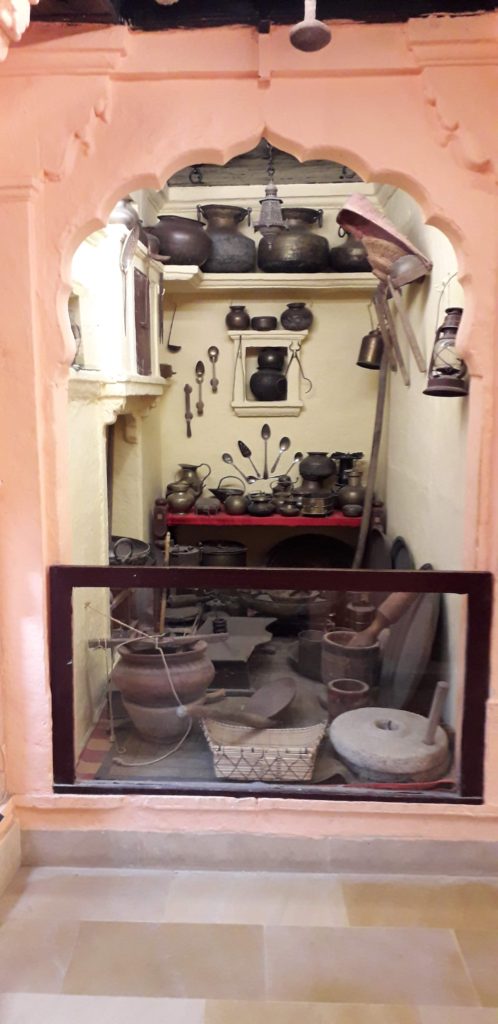
A 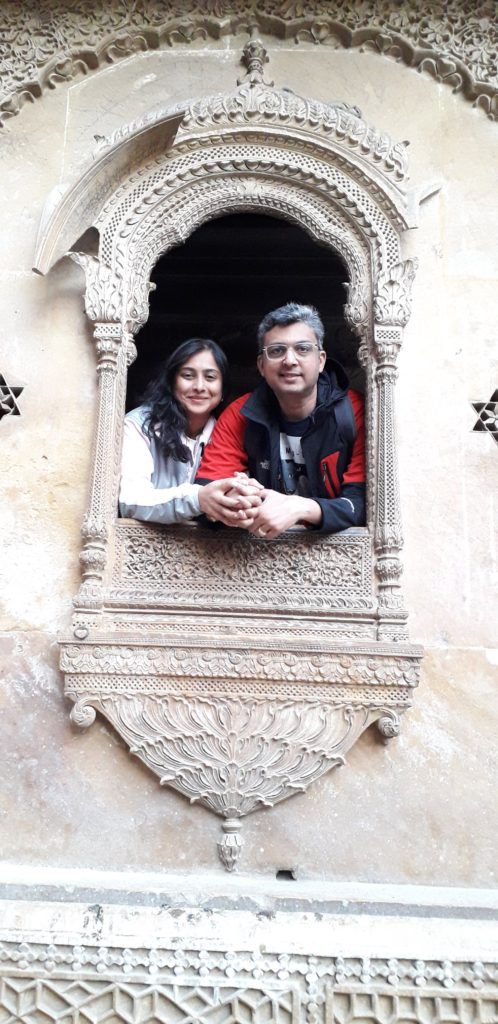
B 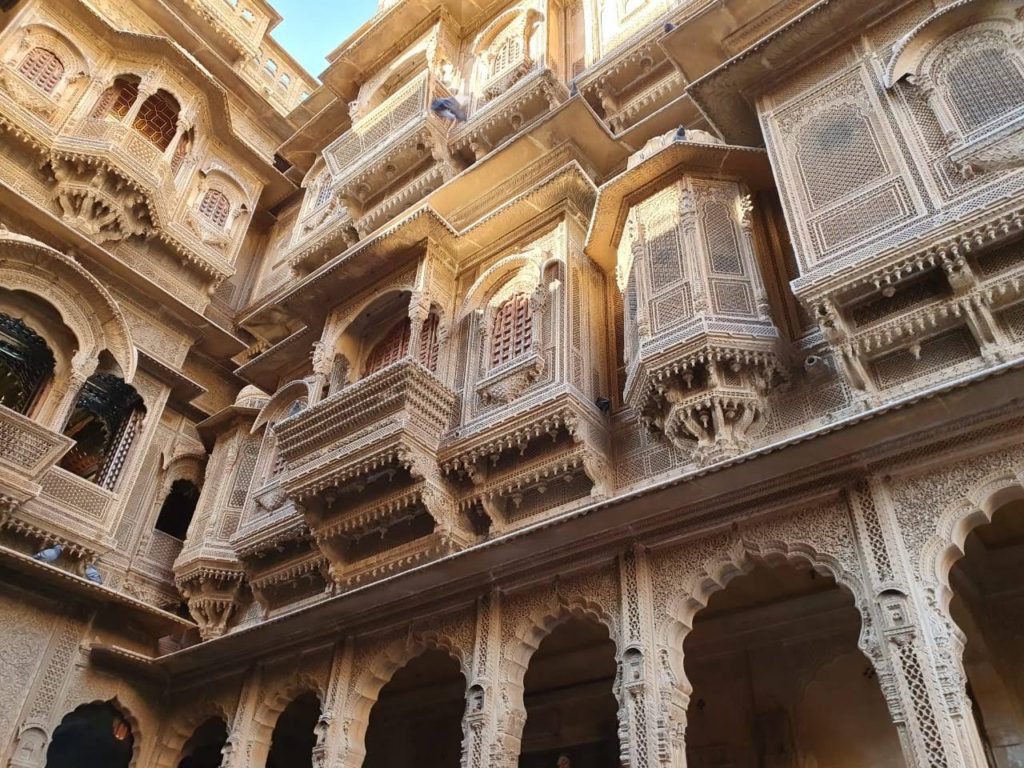
C 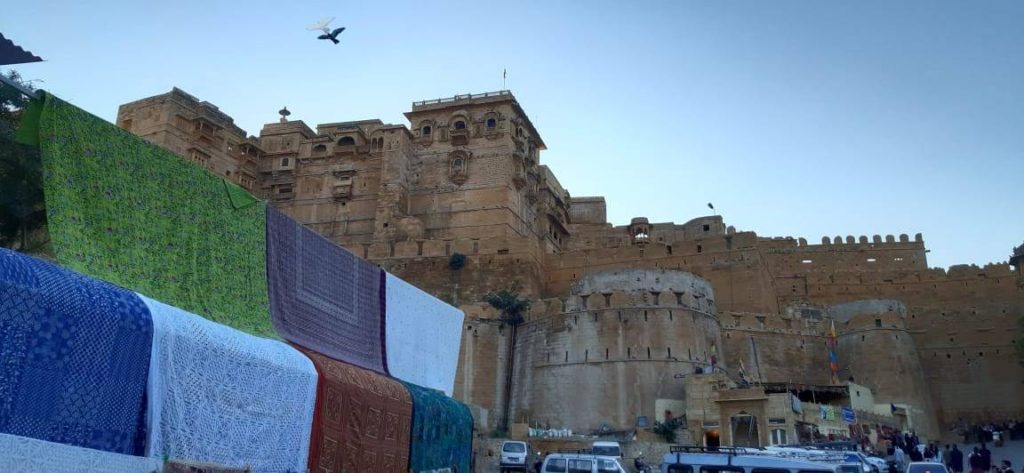
D 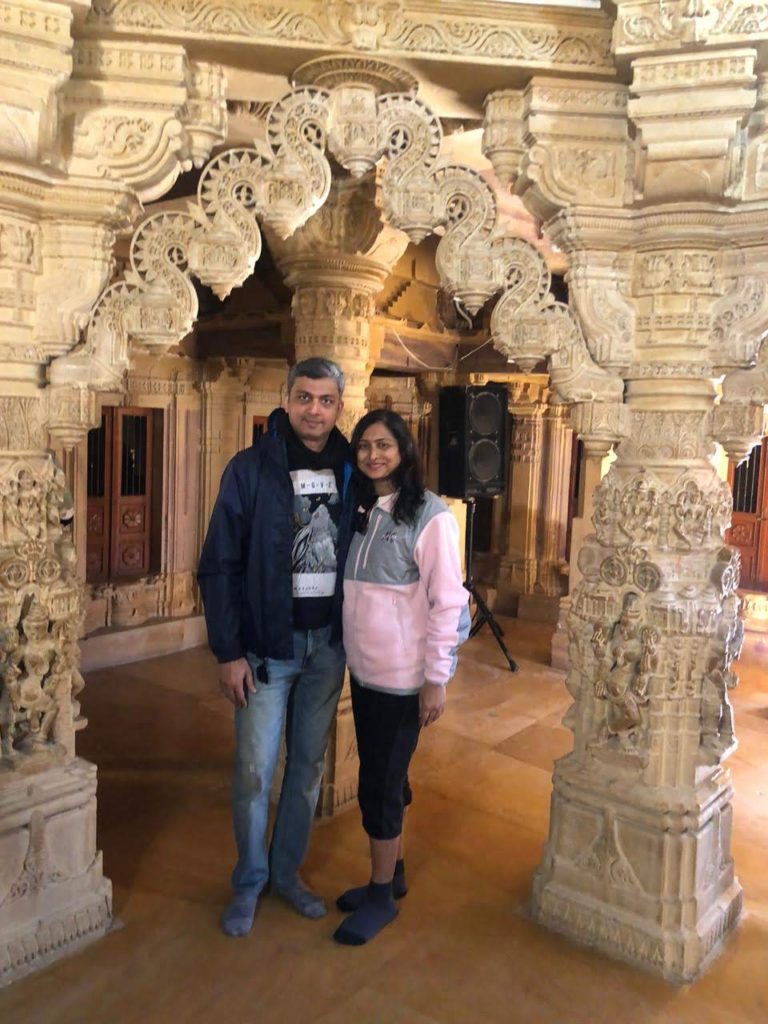
F
There are seven beautiful Jain temples inside the fort. History mentions that Lodurva was a capital for Jaisalmer with several rich Jain merchants and a Temple. When the attacks from the other side of the border starter increasing, they requested the king to allocate a place for their Gods. The kind king gave them land inside the fort and the temple belongings were brought in through a hidden secret tunnel connecting Lodurva and Fort. Thus, 7 temples were constructed inside the fort and there is a small underground library or “Gyan Bhandar” near the tunnel entrance which houses rare artefacts and idols made up of precious stones. It is open only till 12 pm. Worth visiting. Do not miss. Try going to some roof top restaurant to enjoy the view of the fort from a height.
Our next stop is – the famous Patwon ki Haveli. A pompous haveli giving an insight of lifestyle of rich Jain merchants dealing in opium. These merchants often travelled via the silk route to several countries to sell opium, widely grown in Rajasthan. After independence the dealing of opium was banned and these merchants went bankrupt.
There are 5 Havelis which Shri Patwa built for his 5 sons. Haveli # 1 now belongs to Mr Kothari, Haveli # 2, 5 belong to the government and in a slightly dilapated condition, a small museum in its ground floor. Haveli # 3 and 4 still belongs to the Patwa family and members reside here even now. Haveli # 1 is privately owned and Mr Kothari doesnt reside here, he has converted it into a museum so that tourists can tour within the entire haveli. An amazing experience.
raveller’s tips
- Take a guide if you want to understand the history of the fort (we always take a guide) or you may rely on blogs (like mine) which are quite authentic as well.
- Skip the Baa-ri-haveli (entry fee 50) even if your guide insists on it.
- Patwon ki haveli is any time better than it for the same entry fee.
- Enjoy a meal – could be a cup of coffee even – on one of the several roof top restaurants. Worth an experience.
- Do lots of shopping from inside the fort, prices are very competitive and you are sure to get a good bargain on everything. However, silver jewellery is better outside the fort. I bought an antique window, bedsheets, stoles, and indigo vest jacket. There are a couple of road side stalls bang opposite patwon ki haveli selling good purses for a very good price.